Valley of the Kings or Valley of the Gates and kings valley (KV means kings valley), in the ancient times, called (the great field). It is dedicated to the kings, some nobles and sons of Ramesses II
It locates on the west side of Luxor and has two valleys, the east one where most of the tombs are located and the west valley (tomb of Amenhotep III). The Wadi (valley) contains 63 tombs (tomb number 63 was discovered by Otto Schaden and his team in 2005, it is 15 m away from Tutankhamun’s tomb) mostly in good condition. The royal ones decorated with scenes from Egyptian mythology, rituals, and texts from the book of the dead, the litany of Ra, caverns, and more. The beginning of the place goes back to the 18th dynasty so it includes the tombs of the three dynasties 18th, 19th, and 20th. It was such a target for tomb robbers for centuries so it is clear to see the Egyptian treasures everywhere in the world. This site became a world heritage site in 1979. In 1922 was such an awesome discovery of the tomb of the boy king Tutankhamen (Tutankhamon) by the British Egyptologist Haward Carter.
Valley of the kings
From the name valley of the kings, people think that just kings own that place but the fact is not. There are women, kids, and even nobles who had been buried there. In 1827 Mr. John Gardiner put the numbering system but since that time the numbers were assigned as geographically. Who is the first pharaoh who cut his tomb in the Valley of the Kings? The king Tuthmosis I. Historians are sure that all the tombs had been plundered and the only intact ones were KV 46 of Yuya and Thuya then KV62 of Tutankhamun,
Can you visit all the tombs?
No, there are few tombs are open and the tickets include just three tombs. You can choose which one you like to visit.
The open tombs are:-
Ramses VII (KV1), Ramses IV (KV2), Ramses IX (KV6), Merenptah (KV8), Ramses III (KV11), Siptah (KV47), Twosret and Setnakhte (KV14)
Other tombs but under extra charge:-
Seti I (KV17) 1200 LE
Tutankhamun (KV62) 300 LE
Ramses V and Ramses VI (KV9) 100 LE
Why were pharaohs buried in the Valley of the Kings?
The location had been chosen perfectly by the ancient Egyptian architects for several reasons:-
1-It is so dry to keep the embalmed buddies safe
2- The natural shape of the mountain looks like a pyramid even where the sun sets as if the gate to the underworld
3-The limestone quality is easy to do the digging and carving
4-It is far from the Nile and the annual flood
5-The west side of the Nile was mainly a place of death for the ancient Egyptians
Who is the most famous pharaoh in valley of the kings?
The tomb of King Tutankhamun made him famous because officially it is the only intact tomb to be discovered in the Valley of the Kings
Can you go into the tombs in the Valley of the Kings?
Yes, if you are in the Valley of the Kings you can go into the tombs and explore the glory of the ancient Egyptian kings.
Samegypt tours
The tombs:-
KV1 (tomb of Ramesses VII 7th)
Ramesses VII was the 6th king from the 20th dynasty and reigned for about eight years from 1136 till 1129 BC even he the son of Ramesses VI (6). The tomb is a bit small in comparison to other tombs; it contains decorations and illustrations from the book of the dead, Caverns, earth, and more
KV2 (tomb of Ramesses IV, 4th)
Ramses IV was the 3rd king of the 20th dynasty and the son of Ramses III, he ruled almost for six-year from 1155 till 1149 BC. The tomb is about 89 meters of three main corridors; it has the same straight axis. There are some Coptic graffiti inside, decorations from the book of the dead, the book of the caverns, and the litany of Ra. It is a well-preserved tomb with an easy axis to go inside
KV3 (Sons of Rameses III)
In Valley of the Kings, after passing by KV1 and KV2 on the left-hand side located the tomb of the sons of Ramses III. No names have been identified. It has a straight axis with a couple of rooms. The design of this resting place is similar to the tombs in the valley of the queens.
KV4 (Supposed to be for Ramses XI, 11th from 20th dynasty)
This resting place in Valley of the Kings should be made for Rameses XI but never used. Ramses XI was the 10th king of the 20th dynasty and the last. He ruled Egypt for about 30 years even could be longer as some Egyptologists think. Perhaps he was the son of Ramses X. The KV4 is supposed to be for him but the king had been buried in a different place in Memphis as some belief. There some items found in it belong to King Tutankhamun. The tomb is about 100 meters, has three slopping corridors that lead to the good chamber then two other chambers with pillars but unfinished as well. Some paintings refer to Ramses XI but later used to be Pinedjem I (He was a high priest then appointed himself as a pharaoh). This tomb is not open for visits same as many other tombs.
KV6 (tomb of Ramses IX, 9th)
Ramesses IX was the 8th king of the 20th dynasty and could be the son of Mentuherkhepeshef. He was a king for 19 years. The mummy was discovered in the cache of Deir El Bahri in 1881. His tomb or the final resting place was excavated by Henry Salt. It is about 105 meters in the mountain. The tomb contains decorations from the opening the mouth ritual and the book of caverns. The ceiling is decorated with scenes of the goddess Nut.
Recommended to visit by samegypt tours Egyptologist (27/05/2024)
KV7 (tomb of Ramses II, 2nd)
Ramses II know as Ramesses the Great, was the 3rd king of the 19th dynasty and the son of the Seti I. He is one of the most powerful pharaohs of the new kingdom. He was a king for about 67 years. Ramses led many military expeditions to many lands. He ordered the awesome temple of Abu Simbel to be built. He added gigantic figures and the pylon in the Luxor temple. The mummy is in the Egyptian museum. The tomb is not in a good condition after being flooded so it is not open to visitors.
KV8 (tomb of Merenptah)
He was the son of Ramesses II and the thirteenth of his father. He ascended to the throne of the death of his brothers even he was around seventy years old. He ruled almost for ten years. The tomb is very remarkable with its depth and two sarcophagi. The first supposed to mislead the tomb robbers. The tomb is so large in size with mainly five corridors. The walls of these corridors are depicting scenes from the book of the dead, Litany of Ra, and the book of the gates. The tomb is open for visitors.
Recommended to visit by samegypt tours Egyptologist (27/05/2024)
KV9 (tomb of Ramesses V, 5th)
Ramesses V was the son of king Ramesses IV. He was a king just for almost four years then followed by Ramesses VI. The tomb has the same layout of the 20th dynasty but used by his successor Rameses VI. It is so remarkable by the entrance to see a scene of the king Ramses VI with Ra Harakhty but this scene was originally for Ramses V. There are more scenes for the goddess Isis and Nephtys. The tomb is under extra charge and open to the visitor
KV10 (tomb of Amenmesse)
Amenmesse was probably the son of king Merenptah and the 5th king of the 19th dynasty. Historians think that he ruled between three and four years. Other Egyptologists believe that he was a son of Ramses II but without such a certain document. His tomb was manly used by other persons especially after discovering three mummies (two women and a man) and none of them belong to him. The scenes inside are showing two royal women. This tomb is not open for visitors.
KV 11 (Tomb of Ramses III, 3rd)
He was the second pharaoh of the 20th dynasty and could be the last strong king in this dynasty. He was the son of king Setnakhte and ruled for about 29 years. He had such very strong military strategies and led many campaigns against many enemies. The best of his religious building is his temple (Madinat Habu). It is said that he was killed by one of his women Tiye and her son (prince Pentawer). The mummy of the son is now in the Egyptian museum and known as the screaming mummy. There is a fantastic fight scene on his temple showing his military power against the Syrians. His tomb supposed to be for another king (Setnakhte) but the architects extended the axis then given it to Ramesses III. It is already open to visitors since antiquity. The tomb is commonly known as the Harper’s tomb according to two blind harpers are depicted on the walls. The corridors are carrying paintings from the book of the dead, opening the mouth, caverns. The burial chamber is remarkable with eight pillars but the sarcophagus is now in France (Louvre museum)
KV12 (Unknown tomb)
It is one of the unknown tombs or unusual, it is not open for visits.
KV13 (Tomb of Bay the noble)
This tomb was made for a nobleman his name was Bay of the 19th dynasty. His body was not there anyway. This tomb is closed
KV14 (Tausert and Setnakht)
It is a bit confusing for many people because this tomb has already two burial chambers. It was designed at the beginning for queen Tausert (wife of Sethos II). From the paintings believe some historians that the tomb had been designed in different periods. From another point, other historians say that the tomb reused by Setnakht (father of Ramses III). The tomb has several corridors leading first to a chamber then the other two corridors to the burial chamber. Most of the scenes are showing Setnakht in front of different gods with illustrations from the book of the dead.
KV15 (Tomb of Seti II)
Seti II or Sethos was the son of king Merenptah and the 5th pharaoh of the 19th dynasty. He ruled about six years with the same strategy as his father. He kept his strong control over Nubia and the Libyan borders. The design of the tomb consists of an entrance followed by four corridors that leads to a pillared hall then the burial chamber. The walls and the ceiling are already plastered with different decorations of Anubis and gods. Illustrations from the book of the gates and Litany of Ra are clear to be seen.
KV16 (Tomb of Ramesses I)
Ramses I was the founder of the 19th dynasty. He was not from a royal family but a noble military family. His father was the commander Seti. He was close to king Horemheb of the 18th dynasty. Ramses I ruled almost for two years so it was not enough for several achievements. The tomb is not so long but it is about twenty-nine meters. It was excavated by Giovanni Belzoni in 1817. The remarkable point is the sarcophagus which is still inside.
Recommended to visit by samegypt tours Egyptologist (27/05/2024)
KV17 (Tomb of Set I) 1293 BC to 1279
He was the son of Ramses I and the second pharaoh of the 19th dynasty. He had many titles and names, the most famous was the Man of the god Set and Established the justice of the god Ra. Seti I ruled around 13 years from the capital Memphis in the north of Egypt. His period was full of buildings, wars, and political achievements. Seit I had fought the (Hittite) so he got many lands from the back. There are awesome scenes in Karnak temple and his fabulous temples in Abydos are showing all these fights. The religious sites and temples are in Abydos plus the hypostyle hall in Karnak temples. The tomb of Seti I is the most perfect and well decorated in the valley of the kings. It is about 136 meters. This tomb was discovered by Giovanni Belzoni in 1817 so they called it the tomb of Belzoni. The tomb is very unique with its eleven chambers and corridors. The scenes of opening the mouth rituals are clearly to be seen. The sarcophagus is in England. The mummy of Seti I was discovered in 1881 at Deir El Bahari cache but now is in the Cairo Museum.
KV18 (Ramses X, 10th) 1110 BC to 1107 BC
Ramesses X was the ninth pharaoh of the 20th dynasty. He ruled almost for three years even others say it was shorter. There is nothing certain about the relations between Ramses X and the previous king. The tomb that supposed to be for him is not finished so scholars think that he did not use this tomb.
KV19 (Tomb of Montuherkhepeshef son of Ramses IX)
The prince Montuherkhepeshef was the son of Ramses IX. This tomb supposed to be for Ramses VIII who was a king before him but never buried there. The mummy of this prince has not been found yet since its discovery in 1817 by Giovanni Belzoni. The tomb is about 39 meters with some decorations show the prince with his father in front of different deities. This tomb is closed.
KV20 (Tomb of Thutmose I) 1505 BC
He was the 3rd Pharaoh of the 18th dynasty and the son of Amenhotep I. The name is pronounced as Tutmosis I. As soon as he ascended the throne, he had to secure the southern borders from the Nubians. He let the military campaign by himself and personally he killed the Nubian king. They extended the Egyptian borders further to the south. His awesome obelisk in Karnak temple is real evidence of his power. KV20 is the original tomb for him even was made during his time. His daughter Hatshepsut moved him later to be with her in her tomb KV38. The tomb was discovered by the French in 1799. This grave is the first in Valley of the Kings and the beginning of this place to be a burial location. The tomb has a very different design, length of more than 200 meters, five unique corridors, burial chamber with three pillars plus three other side chambers.
KV21 (Two mummies of women)
The tomb was discovered in 1817 by the Italian Giovanni Belzoni. It had two mummies of women, perhaps from the 18th dynasty. It has two corridors with a single chamber with one pillar.
KV22 (WV22) (Tomb of Amenhotep III) Western Valley
King Amenhotep III was the 9th king of the 18th dynasty around 1385 BC. He ruled Egypt for about 35 years when Egypt reached the peak of power and prosperity. He had many religious achievements in Luxor; an awesome example is his fabulous temple of Luxor. He built a large temple on the west side of Luxor which had been destroyed by the earthquake but his massive figures are still witnessing his glory.
His tomb at the western Valley of the Kings is so unique; it has two side chambers for his two wives who died in his lifetime. The tomb was officially discovered before 1799 but more excavations were done by this time. There is an opinion that says that this tomb supposed to be for his father but taken by the son later on. The entry corridors plus the good chamber have an east-west axis then (90°) change to the left. The sarcophagus was not there when they discovered the tomb. In general, the scenes inside are so well and the colors are in a good condition.
KV23 (WV23) (Tomb of Ay)
Ay was the Pharaoh who succeeded Tutankhamun on the throne and to be counted as the 14th pharaoh of the 18th dynasty, his title was Kheperkheperure which means Everlasting are the Manifestations of the god Ra. He was the principal member of the king’s inner circle and the god’s father. Perhaps he was the father of Nefertiti. He was the most powerful man at the time of Akhenaten and Tutankhamun. He ruled for almost three years as most historians think. The tomb was discovered by the Italian Giovanni Belzoni in 1816. The tomb has straight corridors to the burial chamber. It is believed that decorations were made by the same artisans who decorated the tomb of Tutankhamun. The sarcophagus was found as fragments in the burial chamber.
KV24 (WV24) (Unknown)
This tomb is not a royal one; it is clear from the design of a single chamber. It is locating at the end of the western valley. Probably it was left unfinished.
KV25 (WV25) (Unknown)
This tomb is also unknown and unfinished. It is locating in the western valley and could be for Akhenaten but never completed
KV26 (Unknown)
This tomb was opened by James Burton in 1835, it is about 12 meters, nothing can describe that it is a royal tomb. It probably belongs to the 18th dynasty but without finishing.
KV27 (Unknown)
This Unknown small tomb was excavated several times even till 1990. It does not contain any decorations or details.
KV28 (Unknown)
The tomb locates in the Valley of the Kings but so small. It was discovered around 1816. From the excavation, some destroyed objects that could be of a noble person or a high official.
KV29 (Unknown)
This tomb is in Valley of the Kings, it is still full of sand and not totally excavated. It is believed that it is a simple one and not a royal grave.
KV30 (Unknown)
The tomb was discovered by Giovanni Belzoni in 1817 but still not excavated.
KV31 (Unknown)
This tomb is quite different from the other unknown ones. It was discovered by Giovanni Belzoni in 1816. A study was made by the University of Basel around 2011; they found five mummies in the tomb. Three men and two women but no names or any inscription indicates their families or period.
KV32 (Tomb of Tiaa, wife of Amenhotep II, 18th dynasty)
The tomb locates in the Valley of the Kings even it belongs to a queen. Tiaa was the Royal wife of king Amenhotep II from the 18th dynasty and the mother of king Thutmose IV. It is not 100% excavated yet.

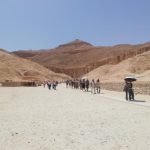
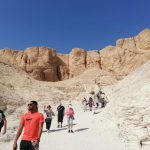
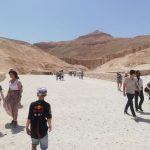
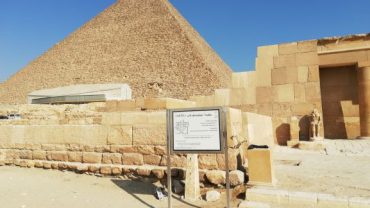
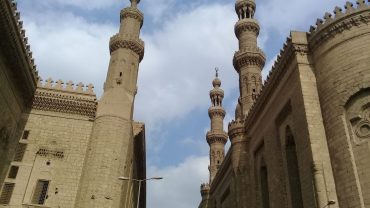
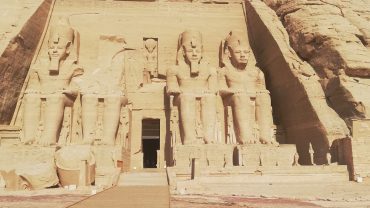
Comment (0)